The rise of Bangladesh as a textile hub
The transformation of Bangladesh into a worldwide textile powerhouse didn’t occur in a single day. Within the early Nineteen Eighties, the nation’s textile trade started to take form with the institution of small-scale garment factories. By the Nineteen Nineties, these factories had grown considerably in quantity and measurement, largely because of the availability of low-cost labour and beneficial authorities insurance policies.
The Multi-Fibre Association (MFA) performed a vital position throughout this era, permitting Bangladesh to export textiles to developed international locations with out going through stringent quotas. Consequently, the trade grew quickly, and by the early 2000s, Bangladesh had established itself as a key participant within the international textile market.
Sheikh Hasina’s reported contribution
Sheikh Hasina, who first got here to energy in 1996, performed a controversial however pivotal position within the growth and modernisation of Bangladesh’s textile trade. Below her management, a number of initiatives had been carried out to assist the trade, together with:
Infrastructure improvement: The federal government invested closely in bettering infrastructure, significantly in transport and vitality, to assist the rising calls for of the textile trade.
Export Processing Zones (EPZs): Particular financial zones had been established to draw international funding, providing tax incentives, duty-free imports of uncooked supplies, and simplified customs procedures.
Labour reforms: Though labour circumstances within the textile trade have been a topic of worldwide scrutiny, Hasina’s authorities launched a number of reforms aimed toward bettering employee security and wages, significantly within the aftermath of the Rana Plaza catastrophe in 2013.
Diplomatic efforts: Hasina’s authorities actively sought to strengthen commerce relations with key markets, significantly the European Union and the USA, securing preferential commerce agreements that boosted exports.
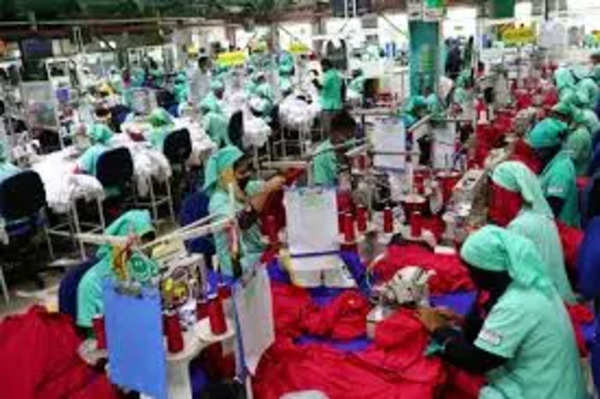
These initiatives, mixed with the entrepreneurial spirit of Bangladeshi enterprise leaders, enabled the nation to draw main worldwide manufacturers like Zara, H&M, and others, which present in Bangladesh a dependable and cost-effective manufacturing base.
Bangladesh’s textile tndustry: An outline
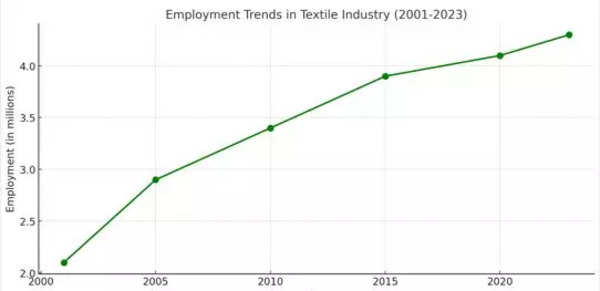
Graph 1: Employment tendencies in textile trade (2001-2023)
Contribution to GDP and employment
The textile and garment trade is the lifeblood of Bangladesh’s financial system, contributing roughly 11% to the nation’s GDP and accounting for over 80% of its complete exports. In response to the Bangladesh Garment Producers and Exporters Affiliation (BGMEA), the trade employs over 4 million folks, with ladies making up the vast majority of the workforce.
The employment tendencies within the textile trade additionally present essential insights into the sector’s position within the nationwide financial system. The next knowledge represents the employment development within the textile sector from 2001 to 2023:
Employment in textile Trade (2001-2023)
| 12 months | Employment (in hundreds of thousands) |
|---|---|
| 2001 | 2.1 |
| 2005 | 2.9 |
| 2010 | 3.4 |
| 2015 | 3.9 |
| 2020 | 4.1 |
| 2023 | 4.3 |
Export development
Bangladesh’s textile exports have proven spectacular development over the previous 20 years. From $5 billion in 2001, exports surged to almost $40 billion by 2023. The next graph illustrates this development trajectory:
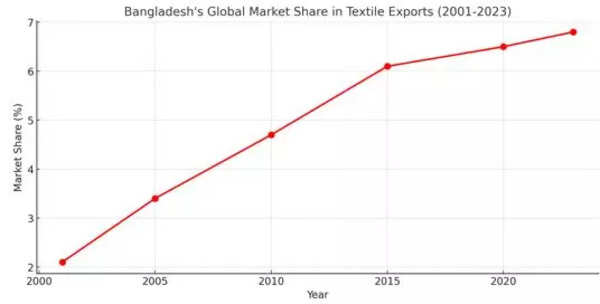
Graph 2: Bangladesh textile export development (2001-2023)
Progress charge
The graph reveals the compound annual development charge (CAGR) of Bangladesh’s textile exports, highlighting key coverage intervals and exterior components such because the Rana Plaza catastrophe and the COVID-19 pandemic. The info highlights the regular enhance in exports, with notable spikes during times of great coverage interventions below Sheikh Hasina’s management.
Bangladesh textile exports (2001-2023)
| 12 months | Export Worth (in billion USD) |
|---|---|
| 2001 | 5.1 |
| 2005 | 8.2 |
| 2010 | 15.6 |
| 2015 | 26.6 |
| 2020 | 34.1 |
| 2023 | 39.8 |
Market share
Bangladesh is presently the second-largest attire exporter on this planet, after China, with a market share of round 6.8%. The nation’s main markets are the European Union and the USA, which collectively account for over 60% of its textile exports.
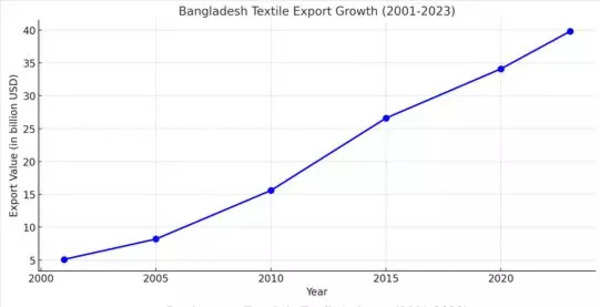
Graph 3: Bangladesh’s international market share (2001-2023)
Bangladesh’s market share in international textile exports (2001-2023)
| 12 months | Market Share (%) |
|---|---|
| 2001 | 2.1 |
| 2005 | 3.4 |
| 2010 | 4.7 |
| 2015 | 6.1 |
| 2020 | 6.5 |
| 2023 | 6.8 |
The influence of Sheikh Hasina’s ouster on the textile trade
Political instability and investor confidence
The latest ouster of Sheikh Hasina has led to important political uncertainty in Bangladesh. Political stability is a essential issue for investor confidence, and the textile trade, with its heavy reliance on international funding and worldwide commerce, is especially weak to political disruptions.
Overseas traders and worldwide manufacturers could turn out to be hesitant to proceed or broaden their operations in Bangladesh if the political setting turns into unstable. This might result in a discount in international direct funding (FDI), which has been a driving pressure behind the trade’s development.
Potential disruptions in commerce relations
Sheikh Hasina’s authorities had established sturdy commerce relationships with key international markets, significantly within the European Union and North America. These relationships had been essential in securing preferential commerce agreements, such because the Generalized System of Preferences (GSP) with the EU, which allowed Bangladeshi merchandise to enter these markets with decreased tariffs.
The change in management could result in renegotiations or perhaps a lack of these commerce advantages if the brand new authorities fails to take care of the identical degree of diplomatic engagement. This might lead to larger tariffs on Bangladeshi textiles, making them much less aggressive within the international market.
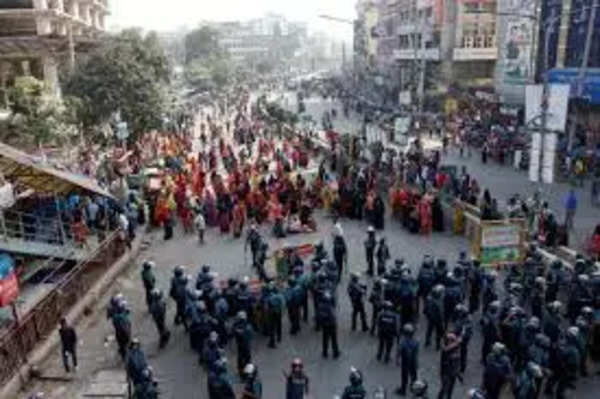
Labour unrest and provide chain disruptions
Political instability typically results in social unrest, and Bangladesh’s textile trade is not any stranger to labour disputes. The removing of Sheikh Hasina, who had carried out a number of labour reforms, may result in elevated tensions between staff and manufacturing facility house owners. Labour unrest may disrupt manufacturing schedules, resulting in delays in fulfilling worldwide orders and damaging Bangladesh’s status as a dependable provider.
Alternatives amidst challenges
Diversification of markets
Whereas the political scenario in Bangladesh presents important dangers, it additionally provides alternatives for the trade to diversify its markets. The trade may discover rising markets in Asia, Africa, and Latin America, decreasing its dependence on conventional markets within the EU and the US.
Funding in expertise and innovation
To stay aggressive in a probably tougher international setting, Bangladesh’s textile trade should put money into expertise and innovation. Automation, sustainable manufacturing practices, and value-added merchandise may assist the trade preserve its edge within the international market.
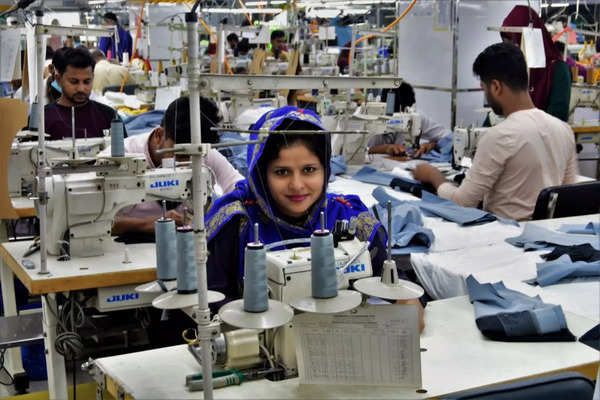
Strengthening home provide chains
The trade may additionally concentrate on strengthening home provide chains to cut back dependence on imported uncooked supplies. This may not solely decrease manufacturing prices but in addition make the trade extra resilient to international provide chain disruptions.
As Bangladesh’s textile trade faces an unsure future, it’s important to recognise each the challenges and alternatives that lie forward. The trade’s resilience, coupled with strategic investments and coverage assist, might be key to making sure its continued success in a quickly altering international panorama.
‘India, Deport Hasina Now’: Khaleda Zia’s Celebration In Bangladesh Roars At Modi Govt | Particulars
The way forward for Bangladesh’s textile trade is at a crossroads. The ouster of Sheikh Hasina introduces important uncertainty, significantly by way of political stability, investor confidence, and commerce relations. Nevertheless, the trade has proven outstanding resilience prior to now, overcoming challenges and capitalising on alternatives to turn out to be a international textile hub.
To navigate the present uncertainties, trade leaders, policymakers, and staff should work collectively to make sure that Bangladesh’s textile trade continues to thrive. By diversifying markets, investing in innovation, and strengthening home provide chains, Bangladesh can preserve its place as a number one textile exporter within the years to return.



